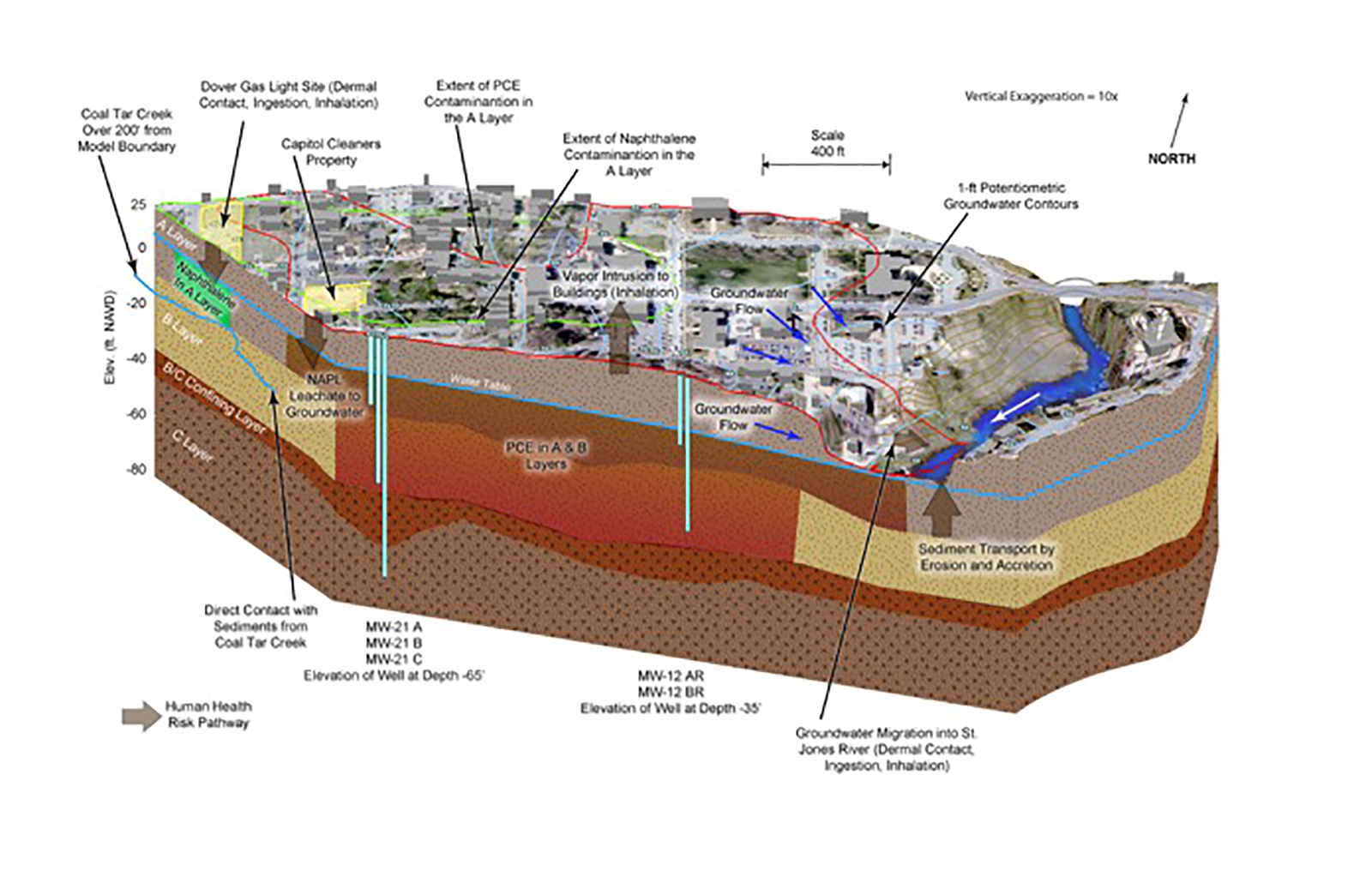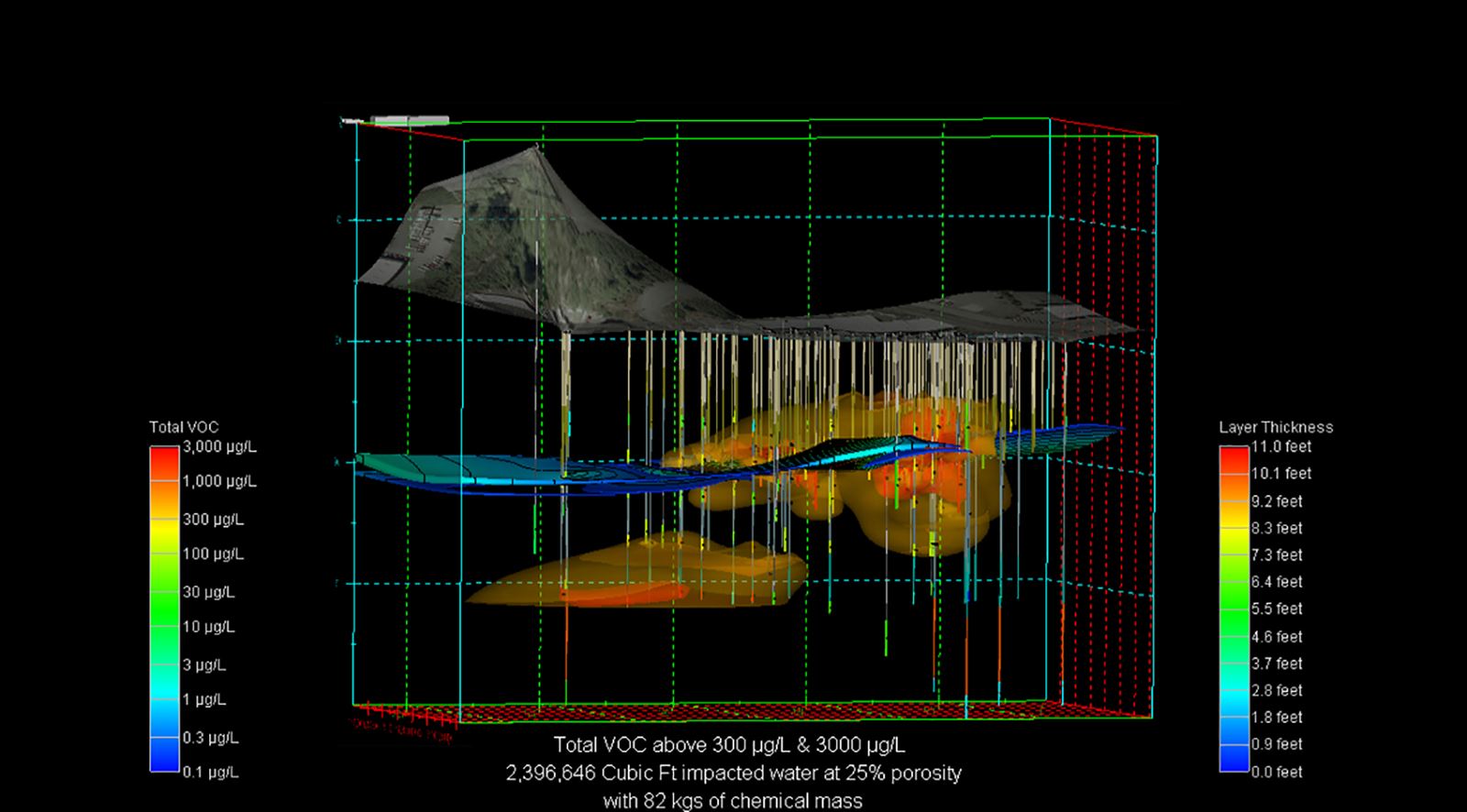Conceptual Site Models
Our success as environmental professionals often requires making sense of complex scientific data sets at our sites to a diverse audience that may include risk assessors, earth scientists, remediation engineers, regulators and the public. The CSM provides a "picture" of the physical, chemical and biological processes that influence the transport, migration and potential impacts of contamination from its sources through environmental media to receptors within the environmental system. Conceptual site models help stakeholders visualize these complex interactions and create a common understanding for decisions and actions.
Conceptual site models help stakeholders visualize these complex interactions and create a common understanding for decisions and actions.
Dynamic Models Evolve with Remediation Progress
CSMs are not static, and should never be considered totally accurate or “complete”; instead, they should be viewed as dynamic and evolving as the remediation process progresses and new data are collected. They have a different role in each phase of a remediation project from preliminary investigation through remedial action (often overlooked) and post-cleanup monitoring:
- Preliminary – Initiate an investigation.
- Baseline – Guide the investigation based on systematic planning.
- Characterization – Dictate any needed modifications to address important data gaps by incorporating new information through iterative updates as the investigation proceeds.
- Remedy selection and design – Form the basis of the feasibility study and remedial design.
- Remediation and post-remedial action monitoring – Provide a means to optimize (or modify) the remedy through iterative updates as performance monitoring data are collected.

- Six Steps to Sustainable Remediation
- Groundwater Completion Strategies for Complex Sites
- A Life-Cycle Perspective Can Reduce Cleanup Costs








